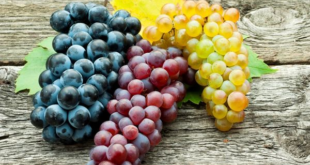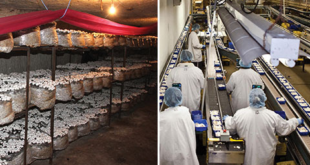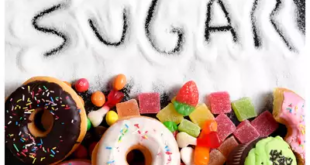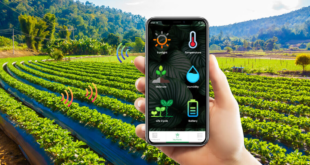Can Japan Model its Agriculture on the Netherlands?
The Netherlands has made active use of IT and AI to boost the value of its agricultural exports, becoming the world’s second largest exporter of agricultural products after the United States. The Abe administration is seeking structural reform of Japan’s agricultural sector based on the Dutch model, but could there be some blind spots in that pursuit? Here I consider what Japan should learn from the Dutch, drawing on my own observations from a visit to the Netherlands.
In the Netherlands, the traditional rural landscape of windmills and tulips is giving way to wind power generation equipment and high-tech glasshouses. The marrow of the Netherlands’ agricultural policy is a strong R&D setup grounded in cooperation among business, knowledge institutions, and government bodies. In 1997, a business-knowledge-government cluster built around the University of Wageningen some 90 kilometers east of the capital Amsterdam was dubbed “regio foodvalle,” or “FoodValley,” after IT driver Silicon Valley in northern California.
The FoodValley Organisation was established in 2004 with capital from the Dutch government, local authorities and food companies, creating a structure for strategic enhancement of partnership among different business types and among industry, universities and government. This strengthened the tendency toward business-oriented research linking directly to corporate profit. Rene Verhulst, mayor of the local municipality Ede, emphasizes that the function of this organization is “to match up all the various related parties.”
I dropped by Hospital Gelderse Vallei, one of those partner institutions. Data on patient diets is analyzed to identify which nutrients assist recovery, while the results are also applied to research on the optimal fatigue recovery diets for top athletes. These results may be trialed at the 2020 Tokyo Olympics.
One slightly left-of-field partner is the Kröller Muller Museum, known for its Vincent Van Gogh collection. The idea in this case is to develop restaurant menus and processed food products inspired by Van Gogh artworks and turn these into business. One example is a chocolate bar incorporating seeds of the sunflowers depicted in the Van Gogh masterpiece “Sunflowers.” Virtually unknown during his lifetime, Van Gogh might have been quite surprised to learn that people are buying not only his paintings but also chocolate designed to exploit his popularity.
FoodValley’s mid-term plan through to 2025 aims to extend its personnel network offshore. The “Global Pipeline” initiative will to bring to FoodValley top young talent from Africa, Asia and around the world who will then return home or go on to break new ground, widening and strengthening FoodValley’s international network. As a result, knowledge from around the world will cluster in FoodValley.
It was the accession of major agricultural nations Spain, Portugal and Greece to the then-European Community in the late 1980s that forced the Netherlands to institute structural reform in the farming sector, and that historical background may well have inspired the Abe administration in its pursuit of the Trans-Pacific Partnership Agreement (TPP) and other trade liberalization.
Prime Minister Shinzo Abe visited hothouse facilities while he was in the Netherlands in March 2014, then went on to position agriculture as a new growth engine in his 2014 Japan Revitalization Strategy, setting the goals of strengthening agriculture’s international competitiveness and boosting exports. Then-Minister of Agriculture, Forestry and Fisheries (MAFF) Yoshimasa Hayashi had also visited the Netherlands in May 2013, and then-Minister of State for Economic Revitalization Akira Amari in September, followed more recently in September 2016 by then-MAFF Minister Ken Saito. Export promotion measures aimed at lifting agricultural and food exports to one trillion yen and the expanded budget for smart agriculture using IT and AI both grew out of what these ministers saw in the Netherlands.
However, imitation of the external form of the Dutch model will not necessarily be optimal for Japanese agriculture. As I noted earlier, the heart of the Netherlands’ agricultural endeavors is FoodValley. Japan too has made good progress on industry-government-university partnership, but remains far below the Netherlands in terms of both scale and strategy. The more globalization advances, the more knowledge has tended to cluster in one area. Just as despite Japan’s best efforts in the semiconductor sector, an industry-government-university cluster on a par with Silicon Valley has failed to emerge here, the world simply has no need for two FoodValleys.
Even more importantly, a trend is emerging even in the Netherlands toward rethinking an extreme export and commercialization orientation. Dutch agriculture tends to be viewed as synonymous with exports, and that was certainly the case for a while. In the 1990s, farmers expanded the scale of their livestock-raising operations (pigs, etc.) to cut their costs. This led to livestock being raised in severely overcrowded conditions, which in turn caused a massive outbreak of hog cholera in the Netherlands in 1997-98. Not only was the livestock industry heavily impacted, but other European companies criticized the Netherlands for relaxing its environmental regulations for the purposes of export promotion—so-called “social dumping” and called for tighter regulation. In response to this bitter export strategy experience, the Netherlands is now introducing limits on livestock numbers and taking a harder line on the phosphoric acid produced from animal manure.
The Netherlands is also revisiting corporatized agriculture. For example, when Partij voor de Dieren (Party for the Animals) was set up in the Netherlands back in 2002, it was, as noted by party leader Marianne Thieme, the subject of ridicule, but it has gone beyond animal protection and animal welfare to call for nuclear power to be abandoned in favor of the use of the natural energies and criticize livestock overcrowding, for example, leading to Thieme and another party member gaining seats in the Dutch House of Representatives in the 2006 elections. Where the Dutch Ministry of Agriculture and Fisheries was absorbed into the Ministry of Economic Affairs in 2010, it has now regained its independence as the Ministry of Agriculture, Nature and Food Quality, becoming a key ministry headed by the Third Deputy Prime Minister.
Speaking at the University of Wageningen on July 12, 2018, chairman of agribusiness banking leader Rabobank Wiebe Draijer identified three challenges for Dutch agriculture: environmental destruction, low farming income, and the weakening of the World Trade Organization (WTO) regime. The environmental destruction caused by agriculture, such as the livestock overcrowding noted above, is drawing harsh criticism from citizens’ groups. Agriculture-related companies might be growing, but this is not necessarily leading to income growth for farmers, 39 percent of whom are living below the poverty line. Export-driven agriculture is vulnerable to external influences, and the rise of protectionism is certainly providing a challenge.
The goals of Dutch agricultural policy are now sustainability and greater efficiency to that end. Researchers, administrators and farmers are all focused on achieving “more with less”—in other words, increasing production while cutting water, fertilizer, power, labor and other inputs by even small increments. IT and AI are powerful tools for that purpose.
The Abe administration’s agricultural policy views cost-cutting as the means to achieve greater efficiency, with the main purpose of IT and AI being to help increase the scale of operations and compensate for the decline in Japan’s farming population and labor shortfalls. While this superficially resembles the Dutch approach, the concept is quite different. Moreover, the two countries have a fundamentally different view of nature.
In the 1930s, the Netherlands separated the Wadden Sea and the IJsselmeer Zuiderzee with a huge causeway, creating a broad strip of reclaimed land. Nature was something to be conquered and technologies were refined to that end, a sentiment captured in the Dutch saying: “God created the world but the Dutch created the Netherlands.”
The Afsluitdijk causeway is 32 kilometers long, making it the largest causeway in the world. Construction of the causeway turned what was a bay into fresh water that became the known as Lake IJsselmeer.
Japan, by contrast, regularly suffers earthquake and typhoon damage, leading many Japanese to perceive their relationship with nature as one of compromise and coexistence. The major earthquake which struck Hokkaido in September indicated how power cuts could throw greenhouse cultivation and dairy farming into crisis in an instant. “Dutch-style” strawberry cultivation using hothouses and IT too was impacted. Where the Netherlands has salty soil, short sunshine hours, and a low average temperature, Japan runs in a long line from north to south and has rich seasonal variation, moderate temperatures and abundant water. Rather than modelling itself on the Netherlands a few laps behind, Japanese agriculture needs to deepen international collaboration while also aspiring to develop optimal innovations for Japan’s production conditions.
Hayato Ishii, Senior Feature Writer, Kyodo News…
Born in Gifu City. Graduated from The University of Tokyo Faculty of Letters, and joined Kyodo News in 1981, serving as Deputy Editor of the Economic News Section, Maebashi Bureau Chief, and Deputy Managing Feature Writer and Editorial Writer before taking up his current position as Gifu Bureau Chief and Senior Feature Writer in February 2018. He has served as president of the Japan Agricultural Journalists’ Association. His many publications include The Strategy of Agricultural Superpower America(Shinchosha), The Secret Pact of Losing Countries: Why the TPP was Distorted (co-authored; Shinchosha), and Japan’s Evolving Food: From Agriculture and Fisheries to the Dinner Table (Kyodo News (ed.), PHP Shinsho). Translations include a Japanese version of Steve Dryden, The Trade Warriors: USTR and the American Crusade for Free Trade (co-translated with Jiro Shiwaku; Kyodo News).
 THE GLOBAL WINDOW OF TURKISH FOOD AND AGRICULTURE The Global Window of Turkish Food and Agriculture Sector
THE GLOBAL WINDOW OF TURKISH FOOD AND AGRICULTURE The Global Window of Turkish Food and Agriculture Sector








